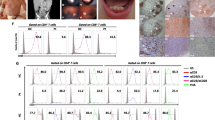Abstract.
Cyclosporine A therapy for prophylaxis against graft rejection revolutionized human organ transplantation. The immunosuppressant drugs cyclosporin A (CsA), FK506 and rapamycin block T-cell activation by interfering with the signal transduction pathway. The target proteins for CsA and FK506 were found to be cyclophilins and FK506-binding proteins, (FKBPs), respectively. They are unrelated in primary sequence, although both are peptidyl-prolyl cis-trans isomerases catalyzing the interconversion of peptidyl-prolyl imide bonds in peptide and protein substrates. However, the prolyl isomerase activity of these proteins is not essential for their immunosuppressive effects. Instead, the specific surfaces of the cyclophilin-CsA and FKBP-FK506 complexes mediate the immunosuppressive action. Moreover, the natural cellular functions of all but a few remain elusive. In some cases it could be demonstrated that prolyl isomerization is the rate-limiting step in protein folding in vitro, but many knockout mutants of single and multiple prolyl isomerases were viable with no detectable phenotype. Even though a direct requirement for in vivo protein folding could not be demonstrated, some important natural substrates of the prolyl isomerases are now known, and they demonstrate the great variety of prolyl isomerization functions in the living cell: (i) A human cyclophilin binds to the Gag polyprotein of the human immunodeficiency virus-1 (HIV-1) virion and was found to be essential for infection with HIV to occur, probably by removal of the virion coat. (ii) Together with heat shock protein (HSP) 90, a member of the chaperone family, high molecular weight cyclophilins and FKBPs bind and activate steroid receptors. This example also demonstrates that prolyl isomerases act together with other folding enzymes, for example the chaperones, and protein disulfide isomerases. (iii) An FKBP was found to act as a modulator of an intracellular calcium release channel. (iv) Along with the cyclophilins and FKBPs, a third class of prolyl isomerases exist, the parvulins. The human parvulin homologue Pin1 is a mitotic regulator essential for the G2/M transition of the eukaryotic cell cycle. These findings place proline isomerases at the intersection of protein folding, signal transduction, trafficking, assembly and cell cycle regulation.
Similar content being viewed by others
Author information
Authors and Affiliations
Additional information
Received 18 September 1998; received after revision 4 November 1998; accepted 23 November 1998
Rights and permissions
About this article
Cite this article
Göthel, S., Marahiel, M. Peptidyl-prolyl cis-trans isomerases, a superfamily of ubiquitous folding catalysts. CMLS, Cell. Mol. Life Sci. 55, 423–436 (1999). https://doi.org/10.1007/s000180050299
Issue Date:
DOI: https://doi.org/10.1007/s000180050299




